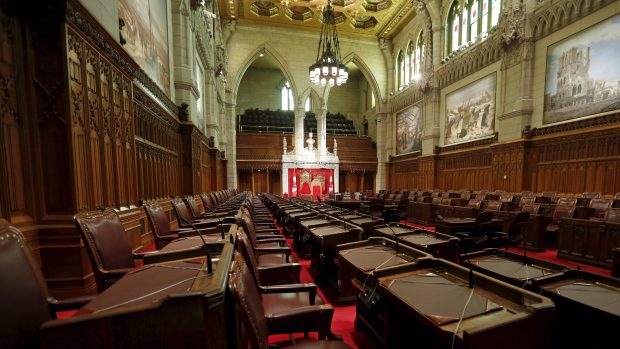It's no secret that the federal government has had a tough time filling vacancies for Governor-in-Council appointments. You name the position, you can find a problem with the process officers of parliament, senators, judges (with the exception of the Supreme Court that process went exceptionally smoothly), and tribunal adjudicators. As backlogs pile up, a slow-moving crisis is unfolding before our eyes.
When they came into power, the Liberals decided that they were going to try and reform the appointment process in order to bolster the diversity in the ranks of those being appointed. With white men still the overwhelming majority of appointments being made up to this point, it was clear that something needed to be done in order to start the culture change that needs to happen at the top in this country. That the government did, however, was probably not the best way to go about it. In creating an "open, transparent, merit-based process" (as Government House Leader Bardish Chagger likes to rhyme off), they went from a system of nomination, to one of self-selection. In other words, the process shifted from seeking out qualified candidates in their fields, to one where they relied on people applying for the jobs instead.
There is a certain amount of merit to this shift, I will grant you. There has been a long-standing problem in the appointments process in this country where those who do the appointments tend to look inside their own box. When writing a story on reforming the judicial appointment process over a year ago, I spoke to Senator Mobina Jaffer about it, and she pointed out this very problem, which is why reforms were necessary.
"Over the years, people kept saying no, no, no, so people stopped applying. This is the same thing that happened with women — they stopped applying, then the chief justice [of B.C.] set up a proactive way to bring people in," Jaffer said. "I have the greatest respect for the judicial committees, but you only select people you know well. If you're out of the box, they don't select you."
And this is part of the where the law of unintended consequences starts to come in. By shifting the focus from nominations to applications in order to try to attract more candidates who are coming outside of the box, and trying to get those potential nominees who stopped applying because they weren't white men, I fear that the government slowed down their own processes even further than the restructuring did. Instead of a system geared toward seeking out qualified candidates, it had to shift to trying to reach out to those communities in a different way to plead and cajole for enough qualified candidates from more diverse backgrounds to do the application process.
The complexity of the application process itself has been mentioned as another potential barrier. For Senate applications in particular, the process has been described as so onerous that one either needs to have nothing else going on in their lives, or to be so convinced of their own merit for the position in order to stick it through that it likely screens out worthy candidates who would be well suited, but who otherwise are put off by the hoops they have to jump through to apply. That also creates the problem of the people who select themselves for the job having an estimation of their abilities that also has the potential to create problems down the road (and we're already seeing a few examples of new senators who are starting to feel a bit entitled to their entitlements). Self-selection was probably the worst possible option for the Senate, and yet here we are, and we still have eleven vacancies, because the government can't seem to manage more than one or two every six months, which isn't keeping up with the pace of attrition.
Judicial vacancies are a well-documented problem, but one of the biggest ones facing the government right now is the crisis with the Immigration and Refugee Board. Because Canada has been flooded with irregular migrants crossing the border illegally, the system is stressed beyond capacity, but there aren't nearly enough IRB members to hear the cases, and when they can only hear two cases a day, it means that the backlogs are stretching to years. (Note: The IRB's problems are not the Liberals' fault alone: the Conservatives took a well-functioning system, reformed the appointment process and created a massive backlog that I'm not sure the system recovered from before Liberals reformed the process yet again). This is a very big problem for the government, especially because the lengthy delays create incentives for more migrants to try their luck in Canada in the hopes of avoiding deportation, and if they stay long enough and build enough of a life for themselves, they can apply to stay on humanitarian and compassionate grounds once the deportation is ordered. This doesn't mesh with the message that they're trying to send that there is no free ticket to Canada.
It would be tempting to dismiss these problems as all being the fault of "diversity hires," and that things were just fine the way they were, but that's not the case, and a judiciary, Senate, or tribunal system that was increasingly divorced from the realities of those it serves was having an ongoing negative effect for our society at large. But tackling that problem by moving away from a system that could more easily reach out to other communities with the right training and incentives (and metrics to ensure that this was happening), to one where now they are forced to plead with communities that have stopped applying because of disappointment, is not helping the system. As backlogs grow, and the consequences of those backlogs become more apparent, it starts to cut to the core of some of the competence of this government, and a realization that they can't get this relatively straightforward issue right. That could be the bigger problem the closer we get to the next election.
Photo Credit: CBC News








